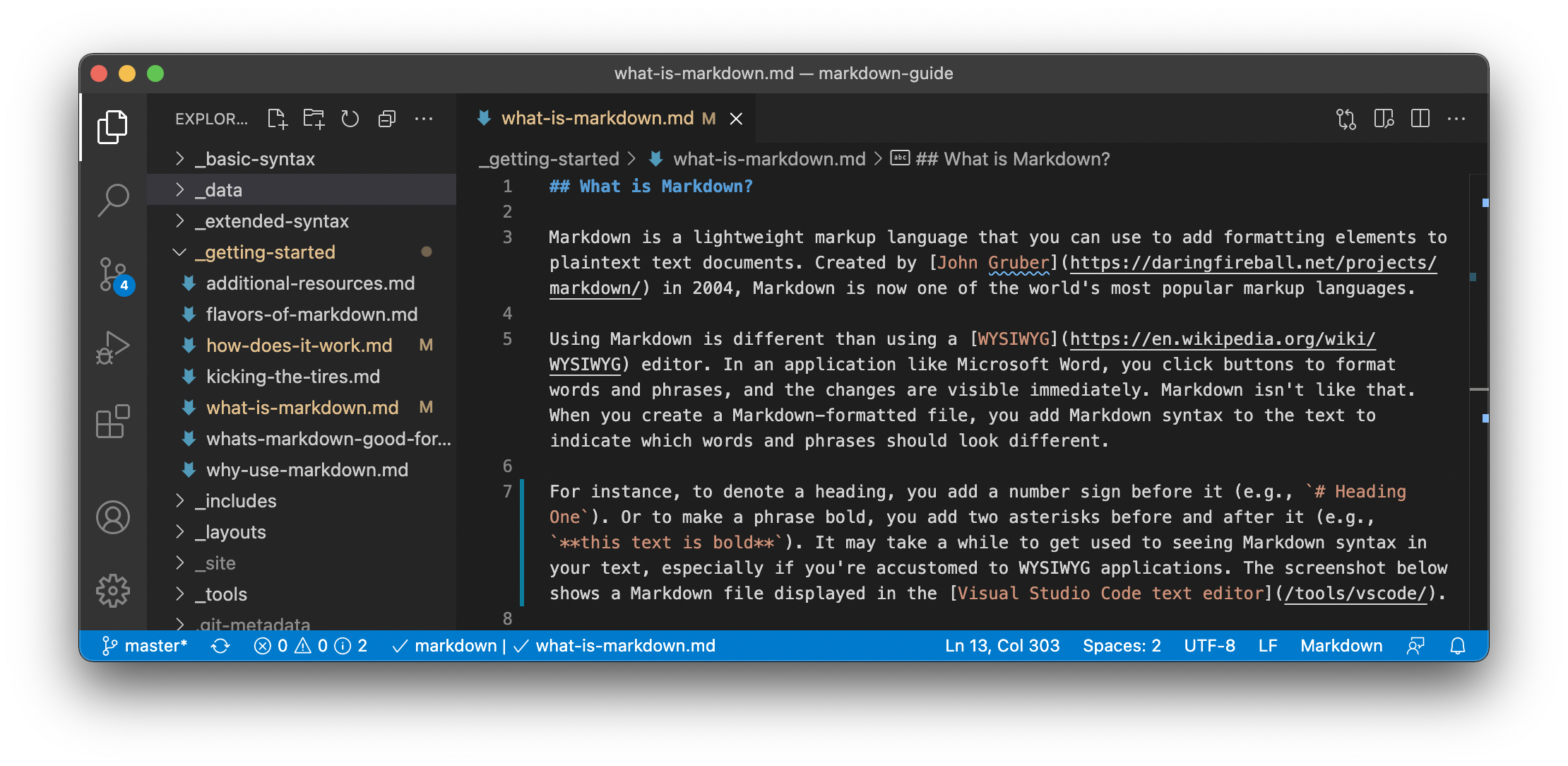- Published on
Markdown: Text Formatting in the Age of AI
- Authors

- Name
- caphe.dev
- @caphe_dev


In the era of technological advancement, text editing is no longer confined to complex software like Microsoft Word. Markdown – a simple text markup language – is becoming the top choice for both programmers and casual users. With an easy-to-learn syntax and the ability to integrate into various platforms, Markdown allows you to create professionally formatted documents with just a few special characters. Especially in the context of artificial intelligence (AI) tools like ChatGPT becoming increasingly popular, understanding Markdown will help you make the most of the automatic formatting capabilities of these tools[1][2][3].
What is Markdown and Why Should You Care?
A Simple Definition of Markdown
Markdown is a text markup language that uses common symbols like #, *, or - to format content. Instead of clicking on bold or italic buttons in the toolbar, you simply write **bold text** or *italic text*, and when published, the text will automatically display the desired formatting[1][4][6].
For example:
# Large Heading→ Large Heading (largest font size).## Smaller Heading→ Smaller Heading.
Benefits of Using Markdown for Non-Experts
- No need for expensive software: You can write Markdown in any text editor, including Notepad or Google Docs[2][6].
- AI compatibility: Tools like ChatGPT and Gemini often return results in Markdown format. Knowing how to use it helps you copy and edit content from AI smoothly[2][6].
- Focus on content: Instead of wasting time adjusting fonts or colors, you can concentrate on conveying your message[9][10].
Basic Guide: How to Format Text with Markdown
Headings – Clearly Organizing Information
Headings help break text into logical sections. In Markdown, you add the # symbol at the beginning of a line, with the number of # corresponding to the heading level:
# Heading Level 1→ Largest size, used for main headings.## Heading Level 2→ Smaller, for subheadings.- And so on up to
###### Heading Level 6[3][8][12].
Practical example:
# How to Brew Great Coffee
## Ingredients Needed
## Steps to Follow
### Step 1: Roast the coffee beans
### Step 2: Grind the beans
Text Formatting: Highlighting Your Message
- Bold: Use
*or__around a word/phrase. For example:*Important note*→ Important note[3][4][6]. - Italic: Use
*or_. For example:*Arabica coffee*→ Arabica coffee. - Bold and Italic: Combine
**or*_. For example:**Limited time offer**→ Limited time offer[4][7][8].
Lists – Organizing Ideas Clearly
Unordered list: Use
-,+, or*at the beginning of a line.- Eggs - Milk - FlourResult:
- Eggs
- Milk
- Flour
Ordered list: Number items in sequential order.
1. Boil water 2. Add tea to the cup 3. Pour boiling waterResult:
- Boil water
- Add tea to the cup
- Pour boiling water[3][6][8].
Links and Images – Connecting Content
- Insert a link:
[display name](URL). For example:[Google](<https://google.com>)→ Google. - Insert an image:
. For example:will display an image from the link[6][8][12].
Practical Applications: Markdown in Daily Work
Quick and Scientific Note-Taking
When attending a meeting, instead of messy notes, you can use Markdown to organize information:
# Meeting on 22/02
## Main Content
- **Project progress**: 80% completed
- *Issues encountered*: Lack of materials
## Plan for Next Week
1. Contact suppliers
2. Check product quality
Creating Simple User Guides
Do you want to write a user guide for seniors on how to use a phone? Markdown helps you present it clearly:
# How to Make a Phone Call
1. Open the **Phone** app
2. Enter the phone number in the blank field
3. Press the **Call** button (green icon)
Working with AI: Leveraging Automatic Formatting
When asking ChatGPT to write a recipe, it often returns results in Markdown format. You just need to copy and paste it into Google Docs, then use an online conversion tool (like Markdown to HTML) to get a polished text[2][6][10].
Advanced Tips: Integrating Markdown into Familiar Tools
Using in Google Docs
Google Docs supports Markdown through the Auto-detect Markdown feature (enabled in Tools > Preferences). For example:
- Type
# Heading→ Automatically converts to Heading Level 1. - Type
*bold*→ Bold text[6][10].
Writing Blogs or Social Media Posts
Many platforms like WordPress and Medium support Markdown. You can write content directly in Markdown without needing complex editors[7][9][11].
Conclusion: Markdown – A Gateway to Efficiency
Markdown is not just for programmers. With its simple yet powerful syntax, it is an ideal tool for anyone to save time and enhance the quality of their text. From personal notes to user guides, from working with AI to publishing content online, Markdown proves that text formatting can be both visually appealing and uncomplicated without complex software.
Start by experimenting with Markdown in your daily work – you will be amazed at the convenience it brings!
Sources